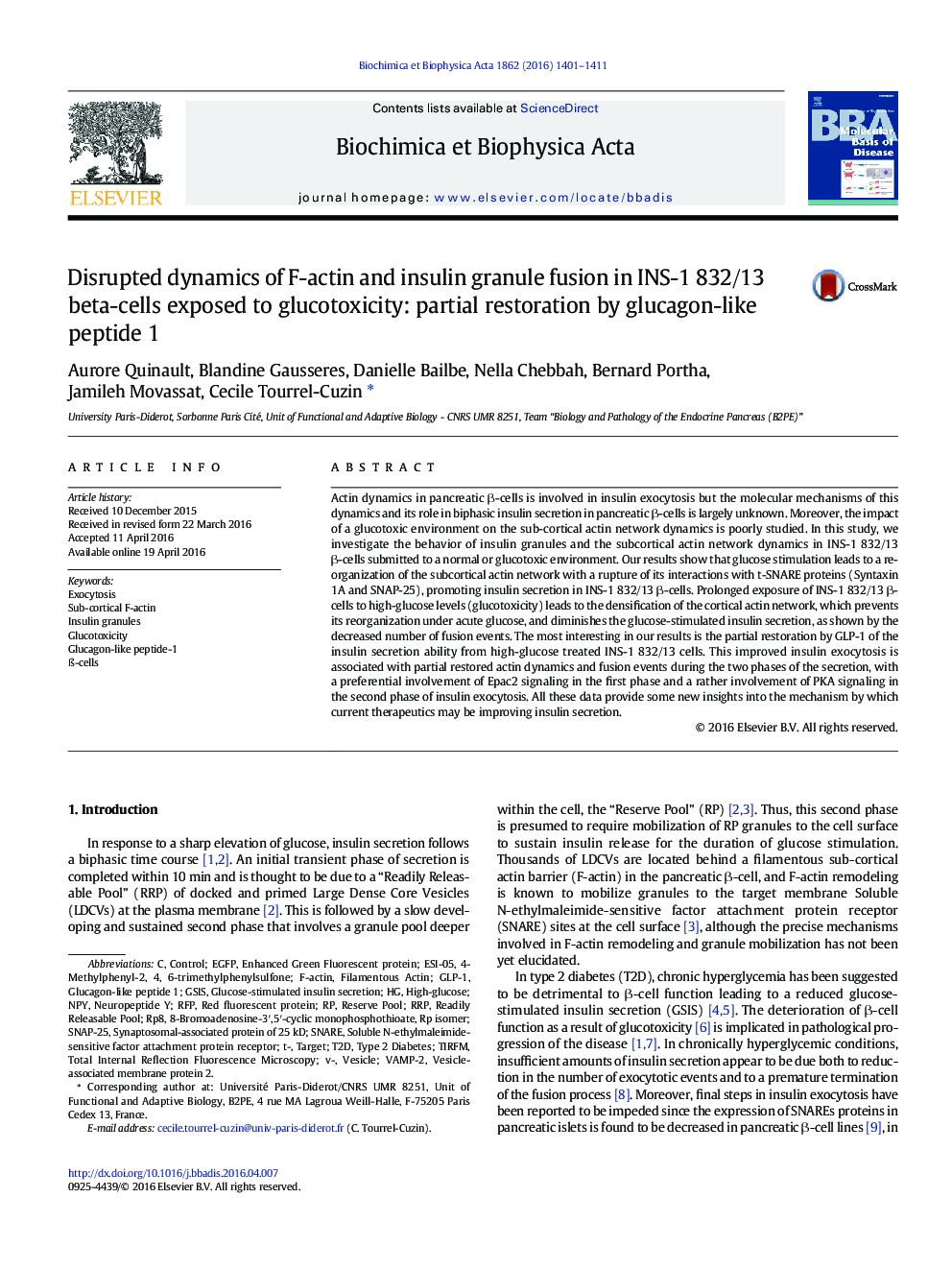| Article ID | Journal | Published Year | Pages | File Type |
|---|---|---|---|---|
| 8259163 | Biochimica et Biophysica Acta (BBA) - Molecular Basis of Disease | 2016 | 11 Pages |
Abstract
Actin dynamics in pancreatic β-cells is involved in insulin exocytosis but the molecular mechanisms of this dynamics and its role in biphasic insulin secretion in pancreatic β-cells is largely unknown. Moreover, the impact of a glucotoxic environment on the sub-cortical actin network dynamics is poorly studied. In this study, we investigate the behavior of insulin granules and the subcortical actin network dynamics in INS-1 832/13 β-cells submitted to a normal or glucotoxic environment. Our results show that glucose stimulation leads to a reorganization of the subcortical actin network with a rupture of its interactions with t-SNARE proteins (Syntaxin 1A and SNAP-25), promoting insulin secretion in INS-1 832/13 β-cells. Prolonged exposure of INS-1 832/13 β-cells to high-glucose levels (glucotoxicity) leads to the densification of the cortical actin network, which prevents its reorganization under acute glucose, and diminishes the glucose-stimulated insulin secretion, as shown by the decreased number of fusion events. The most interesting in our results is the partial restoration by GLP-1 of the insulin secretion ability from high-glucose treated INS-1 832/13 cells. This improved insulin exocytosis is associated with partial restored actin dynamics and fusion events during the two phases of the secretion, with a preferential involvement of Epac2 signaling in the first phase and a rather involvement of PKA signaling in the second phase of insulin exocytosis. All these data provide some new insights into the mechanism by which current therapeutics may be improving insulin secretion.
Keywords
TIRFMRFPeGFPGSISRRPF-actinNPYVAMP-2SNAREGLP-1VesicleT2DSNAP-25filamentous actinreserve poolExocytosisreadily releasable poolGlucose-stimulated insulin secretionType 2 diabetesGlucotoxicityTotal internal reflection fluorescence microscopyTargetVesicle-associated membrane protein 2enhanced green fluorescent proteinred fluorescent proteinglucagon-like peptide-1glucagon-like peptide 1ControlHigh-glucosesoluble N-ethylmaleimide-sensitive factor attachment protein receptorNeuropeptide Y
Related Topics
Life Sciences
Biochemistry, Genetics and Molecular Biology
Ageing
Authors
Aurore Quinault, Blandine Gausseres, Danielle Bailbe, Nella Chebbah, Bernard Portha, Jamileh Movassat, Cecile Tourrel-Cuzin,
